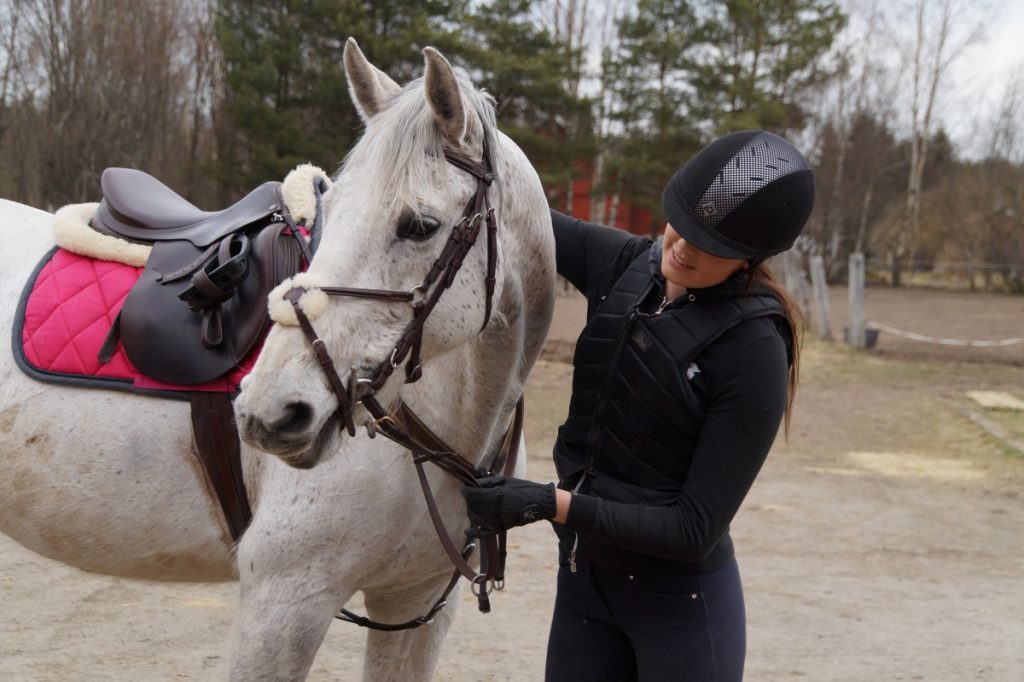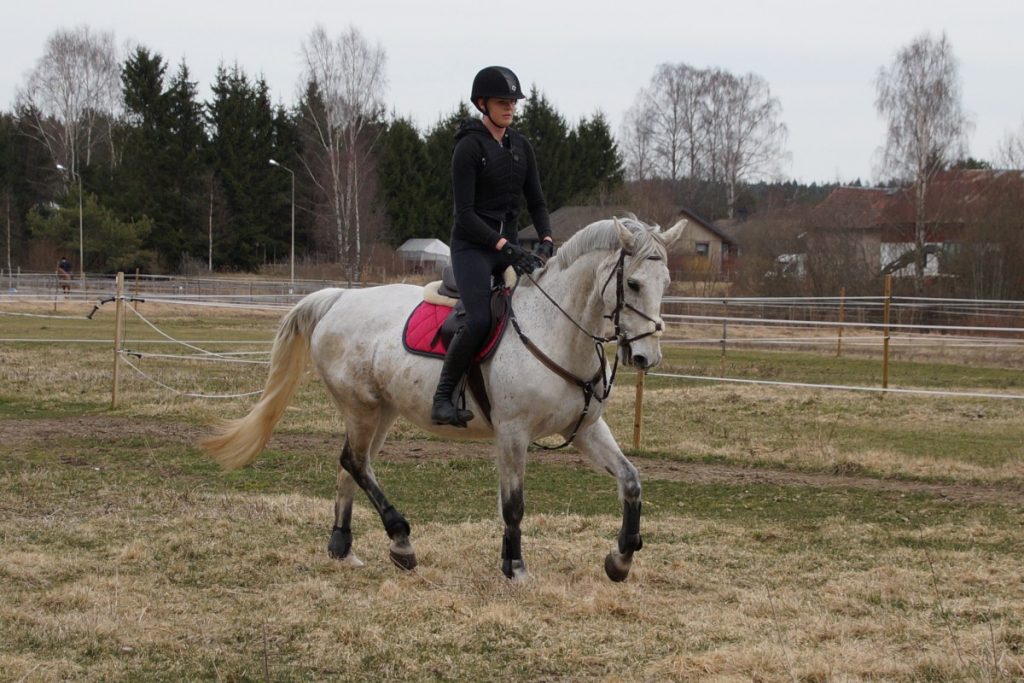Horses are beautiful, majestic, strong creatures, so it can be hard to imagine that anything bad could ever happen to them. However, if you have recently noticed your four-legged friend develop white spots in their coat, you may be wondering if there is any cause for concern.
Why do horses get white hair? Horses can develop white hair (which is more often referred to as “gray” hair) because of their specific breed, genetics, or a saddling issue. It is important to note that white or gray hair in horses is not usually a sign of illness or danger.
In the remainder of this article, we will go over the reasons why horses get white or gray hair in greater detail, including how it happens, what it means for your horse, and how it may or may not be prevented in some cases.
The Distinction Between White and Gray Hair in Horses
The reason why “gray horses” are sometimes called “white” horses is because the gray and white-coated horses look very similar to the eye. However, while a gray horse’s skin is black with dark eyes, white horses will typically have all pink skin under their coat, and some even tend to have blue eyes.
When Do Horses Get White/Gray Hair?
Horses can gray at different rates. While one horse may not develop gray spots for many years, another horse could be completely gray before its tenth birthday. There are also some horses that may end up with intermixed light and dark gray hairs throughout their coat even from birth.
Over time, some horses can end up developing a dappled pattern on their coats, which means they may have irregular gray spots in their fur or on their skin. As they get older, gray horses may develop pigmented speckles in their mostly gray coats, also affectionately called a ”flea-bitten gray” coat.
Reasons Why Horses Get White/Gray Hair
The following are the three main reasons why horses usually begin to grow white or gray hair over time:
Specific Horse Breeds Are Prone to Gray Hair
While it is possible for any horse to get white or gray hairs, breeds that are descendants from Arabian ancestors typically develop gray coats more often than others. Other horse breeds that tend to have gray colored coats are:
- Thoroughbred
- America Quarter Horse
- Welsh Pony
- Percheron
- Andalusian
- Lipizzaner
If you are a new horse owner and you are not sure of your horse’s breed or how to tell if your horse will one day begin to grow white or gray hair, there is at least one sign to keep an eye out for. As previously mentioned, gray horses are recognized by their depigmentation; most gray horses will have black skin and dark eyes, rather than pink skin and lighter eyes.
Gray Hair Can Be Passed Down Through Genes
Initially, all horsehair is white as it grows out of the follicle. The hair strand gets its color, melanin, through specialized cells called melanocytes. These specialized cells secrete melanin into the follicles to give the hairs their color.
The gray gene is dominant, so if there is even a single copy of this gene in your horse’s DNA, the gene will likely cause your horse to turn gray. Some research shows that if your horse has one copy of the gene, then they often retain the original pigment in their genetic makeup. If your horse has two copies of the dominant gray gene, all their children will be gray.

However, when “gray horses” are born, their coat can be any natural color, depending on the coloring genes from the foal’s parents. If the gray hairs are genetic, they will begin to appear shortly after birth. The first area where gray hairs appear will be on the head, usually around the eyes.
The gray hairs will become progressively more apparent as time goes on; eventually, your black or brown horse’s coat will turn completely gray in color. In some cases, the depigmentation of the hair often results in a coat color that is almost entirely white or gray by the time that your horse is between the age of six to eight years old.
There is too Much Saddle Pressure
Sometimes, the principal cause of gray hair is not through a horse’s breed or genetics but from the death of the cells that give pigment to the hair; this is usually a result of significant saddle pressure.
While saddles do not have to be custom made for each horse, you have to measure your horse’s withers, back length, and body structure to make sure you have the right fit. If your saddle does not have the right measurements, your horse could face saddle pressure.
Saddle pressure is caused by an issue with your saddle’s tree angle. The saddle tree is the structure that gives the seat its shape and helps appropriately distribute the weight of the rider on the horse’s back. If the angle that the tree sits at on the horse’s back is too wide, it can put unneeded pressure on either side of the horse’s withers. This pressure on the withers causes its cells to become damaged, which means that the cells can no longer pump the melanin pigment into the follicles.
If you notice the gray spots under your saddle early on, then the graying is preventable. To stop the graying from continuing—and even get the gray hairs to revert—all you must do is correct the fit of the saddle. If corrected in enough time, the cells can begin to repair themselves, and the gray or white hairs will be gone by the next coat change.
*NOTE: gray hairs usually show up more in the spring or the fall when the horse’s coat changes more naturally. Be sure to check under your saddles more around this time of the year.
When Should You Call the Vet About White/Gray Hairs?
The only two cases where you may want to consider calling the vet for noticeable white/gray hairs your horse is developing is regarding extreme saddle pressure and regular screenings for dermal melanomas.

- Saddle Pressure – If you do not make a saddle size adjustment quickly enough, there is a chance that the damage to the horse’s melanocytes across its back will be permanent. However, this is not where the damage can stop; lasting focal pressure could also lead to severe back pain and harmed nerves in the horse’s body. Therefore, it is essential to give your vet a call if you notice any graying around your horse’s back to make sure he or she is okay.
- Cancerous Dermal Melanomas – Genetically speaking, gray horses are particularly prone to developing dermal melanomas around their tail and head. Dermal melanomas are a type of skin tumor, and over 70% of gray horses older than 15 years old will eventually develop a melanoma. Melanomas are not always cancerous, but they can be. So, if you have a gray horse, it is vital that you stay on top of your horse’s health and get them checked by a vet frequently.
Conclusion
In conclusion, if you notice your horse’s coat beginning to turn white or gray, there is usually no need to worry; this is mostly a natural occurrence due to their breed and genetics.
However, if you often saddle your horse, you may want to check its placement and how effectively it distributes pressure along the horse’s back. Sometimes, a coat can begin to turn white or gray because of cells dying due to too much saddle pressure on them, and if addressed quickly enough, the damage may be reversed.
Ultimately, if your horse develops white or gray hairs and you are still concerned, there is never any harm in making a call to your veterinarian to ask questions or to have them check your horse out. Regular checkups will also allow the vet to screen a gray horse for signs of cancerous dermal melanomas or extensive saddle damage if they are present.
